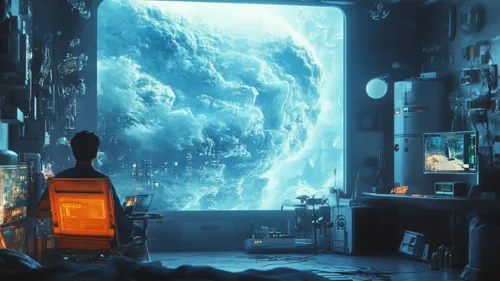Hola, No le vemos tanto peligro a las cookies, pero nos obligan a informarte que usamos cookies propias y de terceros para estadísticas anónimas de uso. Si sigues en nuestra página entendemos que te parece bien. Saber más
No AceptarWe use third party cookies to improve our services and get anonymous statistical usage data of our website. If you continue browsing we consider that you accept its use. You can get more information at Privacy Policy and Cookies Know more
No Accept
None
None
None
None
None
None
None
uDEjTdYRLGPqAFV5rdWMAfC7A1yHYAAlgN0xJLQbLLqic
uDEjTdYRLGPqAFV5rdWMAfC7A1yHYAAlgN0xJLQbLLqic
ATkPFPzHPAGQ3LqzYZXEoLMtnsyK2yDIt99zu7lUqwSmD
Related Posts

¿Por qué Blender es tan popular?

¿Con qué anima Disney Pixar?

Unreal 4.27 y el Path Tracing

Software 3D. Autodesk Maya

Software 3D. Forget App

Los VFX de Dune

Pipeline, the Build phase of a scene from Maya

Render

Setting Shot de Maya

Setting Render Layers de Maya

Crear AOVs en Maya

Builder Maya

VFX with Maya, Houdini, Nuke and Hiero (v1)

11 Maya Checkers

10 Maya Builder

Animation Phase 2. Script

Script Tools, FinalDraft

Animation Phase 10. Rigging

Company Billing

The Importance of a Project Manager Software.

New UI Layout +20%

Color Theory

Technical Director Software: Best Tools for Pipeline Management

VFX Software: How to Choose the Best Tool for Your Studio

Audiovisual Production Management: How to Optimize Your Projects

Collaborative Tools for TDs: Enhancing Teamwork and Efficiency in Technical Workflows

Tools for Remote Team Collaboration: Driving Productivity in Distributed Teams

Secure Project Management Tools: Protecting Your Data and Streamlining Workflows

Create and Edit Actions

Global Tools

Workspace Buttons

Blocks of Actions

The Complete Guide to Animation Team Collaboration Software

Mastering Pipeline Management: A Comprehensive Guide to Workflow Optimization

Elevating Your Animation Production: A Comprehensive Guide to Management Software

Strategic Partnership: PipelinePro and Blackmagic Design unite to transform production workflows

How Flow (2024) Revolutionized Animation with Open-Source Tools

Cloud-based collaboration tools for animation teams

Customizable Tools for VFX Pipelines

Top-Rated Remote Collaboration Tools for Animation Production

Project Tracking Software for Technical Directors

Cloud-Based vs On-Premise Animation Automation Tools

Best automation software for animation studios

15 Render Tool

Render Tool - Blender

